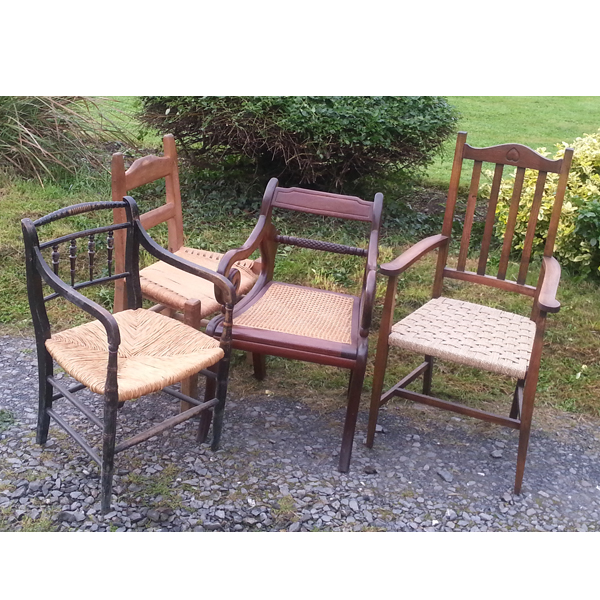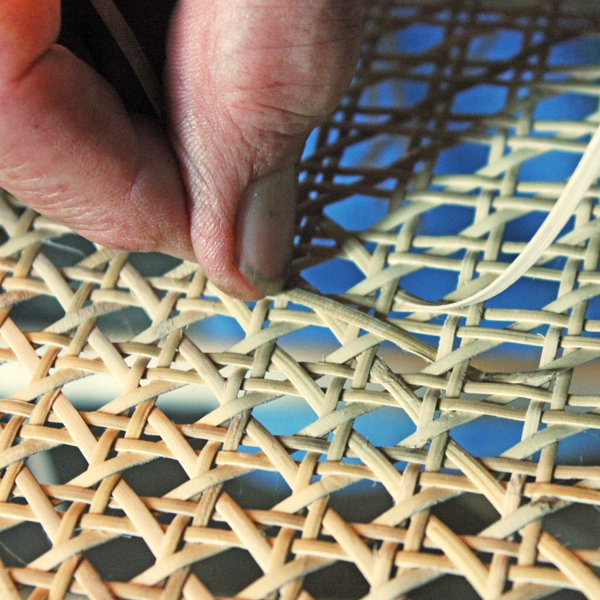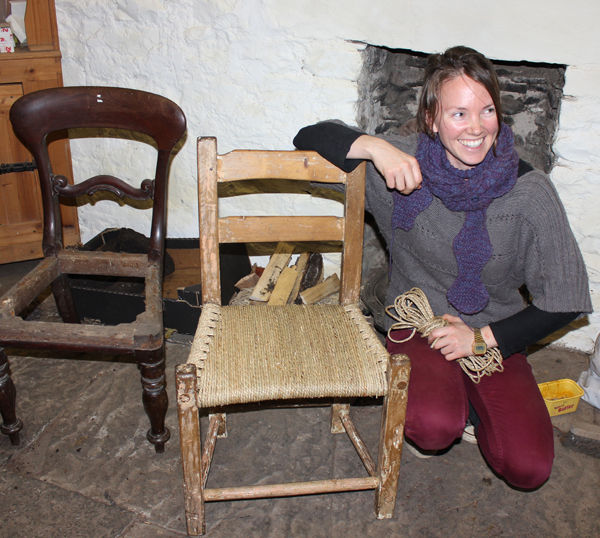Natural Fibre Seating
All these chairs use natural fibres to form the seat.
From left to right, Rush, Sisal cord, Woven split cane and Sea-grass.
Natural fibre seating is hard-wearing and breathable.

Cane-work
We replace worn, broken or damaged cane-work in chairs.
The work is slow because in traditional cane-work, each strand is individually woven to form the seat.
Scroll down to find estimating calculation for the cost of cane-work.

Rush Seating
Natural and continuous rolled rush and rolled paper rush substitute all have applications in seating furniture.
We recommend replacing like for like.
Sea-grass
A popular alternative to laid twines – traditionally used in small seating especially stools.
How to cost hand-woven Cane-work.
Cane-work is slow and expensive work so here is a rough guide to estimate the cost.
- The cane work has a length, L and a width W, along the length the greatest number of holes is NL and along the width, the greatest number of holes is NW.
- Measure the length L and the Width W in metres and count the numbers of holes.
- Multiply L x NW and add it to W x NL.
- Multiply the answer by 6 to give the price in Euros.
This is only a rough guide and for accurate pricing we need to see the piece or at least pictures of it.
Most cane-work is roughly square, made up in a 6-way weave, two warp, two weft and two diagonals, but if there is a fan pattern or island or some other complexity built into the original weave or if it is double sided, the work will be more expensive.
Sugán
We can re-seat traditional Irish country chairs in a variety of natural fibre materials.
Quite often the spindles need to be replaced – no problem.
We use sisal cord or seagrass

